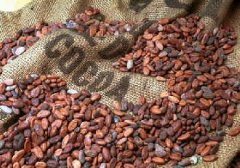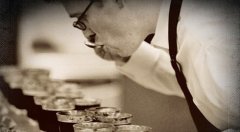The basic knowledge of espresso

Barista (coffee maker)
It refers to the person who stands behind the Starbucks counter and knows every perfect concentrated drink recipe. He can interpret your needs and make the drinks you really want.
Shot (one espresso)
One ounce of espresso. Each standard espresso consists of three parts: rich gold foam (crema), mellow taste (body) and warm heart (heart). Gold foam refers to the caramel-colored foam on the surface of espresso, which disappears a few seconds after the espresso is brewed.
Espresso (espresso)
Use the mellow coffee extracted from our concentrated roasted coffee beans. Espresso is usually served in a small coffee cup and is often used to blend other unique coffee drinks.
Espresso Con Pana (Elystro CONE PA'-NA) (concentrated Campbell Blue)
The espresso is covered with smooth whipped cream.
Espresso Macchiato (concentrated macchiato) (Emuri SPREENTRON39THING so MA-KEE-AH'-TOE
Espresso is gently marked with foam.
Caffe Latte (KA-FAY' LA'-TAY) (Nati)
A three-stage, smooth-tasting drink: a fresh espresso, filled with hot milk, and then covered with a thin layer of milk foam to create an amazing taste. Latte Macchiato is made in much the same way as Natti, except that macchiato must first add milk and then add coffee to "mark" it to make it taste smoother (Macchiato), which means "marking" in Italian.
Caffe Mocha (KA-FAY' MO'-KAH) (Mocha)
A classic combination of mellow espresso and high-quality chocolate, mixed with fresh hot milk and topped with smooth whipped cream.
Cappuccino (KA-PU-CHEE'-NO) (cappuccino)
A typical Italian breakfast drink with less milk and more bubbles than Latte. Generally speaking, "dry" (dry) refers to cappuccino with more milk foam, while "wet" (wet) refers to cappuccino with more milk.
Caffe Americano (KA-FAY' American Coffee)
The combination of mellow espresso and hot water creates a drink with a full flavor and a deep taste of espresso.
Single (single espresso)
An espresso (about 1 ounce) extracted from an espresso machine, usually served alone or steamed with mellow hot milk. Most small and medium drinks contain an espresso.
Double (double espresso)
Two single espressos are standard for Starbucks large drinks, but if you want your medium natty to be stronger, you can tell the service staff to add an extra espresso for you.
Short (small cup)
In Starbucks,Short, it refers to an 8-ounce drink that is most suitable for drinking after dinner.
Tall (medium cup)
Tall refers to a 12-ounce drink, which is the most frequently ordered Size.
Grande (large cup)
In Starbucks,Grande, it refers to a 16-ounce drink, which is your best choice when you want to reward yourself.
Low-fat (low fat)
For a more burden-free option, you can choose low-fat milk to make your own low-fat natty.
No foam (no foam)
Don't you like the milk foam on the embankment on your nose? You can tell the service staff that you don't want foam, so you'll only get a combination of espresso and hot milk.
Dry (those with more milk foam)
It means that there are more bubbles than milk. If you like cappuccino full of sweet milk foam, you can tell the service staff what you need.
With room (leave some space)
I'd like to add some milk to my American coffee / daily coffee, please make some room for me.
Whip (fresh cream)
The abbreviation for Whipped cream. If you want to reduce the calories of mocha coffee, you can tell the service staff, "I don't want whipped cream" (no whip).
Vanilla (vanilla syrup), Hazelnut (hazelnut syrup) etc.
Important Notice :
前街咖啡 FrontStreet Coffee has moved to new addredd:
FrontStreet Coffee Address: 315,Donghua East Road,GuangZhou
Tel:020 38364473
- Prev

The types and characteristics of common coffee beans what are their characteristics?
What are the common coffee beans? What are their characteristics? Below, Baitianhui will introduce the common coffee beans and their characteristics. Brazilian coffee beans are used for blending, preferably Santos bourbon coffee, which is soft, chocolate and well-balanced in acidity; Colombian coffee beans are full-bodied with rich aromas and high acidity. Costa Rican coffee beans are very fragrant
- Next

Coffee brewing utensils drip filter coffee Kalita
Filter paper brewing is popular in Italian coffee today, it seems to have been forgotten, at the same time, because filter paper brewing is not as ornamental as siphon, nor as rich as coffee extracted by pressure pot, so there are few gluttons who really like filter paper brewing. However, filter paper brewing is one of my daily required courses. The reasons are 3: 1, filter paper brewing for coffee beans and phase.
Related
- Beginners will see the "Coffee pull flower" guide!
- What is the difference between ice blog purified milk and ordinary milk coffee?
- Why is the Philippines the largest producer of crops in Liberia?
- For coffee extraction, should the fine powder be retained?
- How does extracted espresso fill pressed powder? How much strength does it take to press the powder?
- How to make jasmine cold extract coffee? Is the jasmine + latte good?
- Will this little toy really make the coffee taste better? How does Lily Drip affect coffee extraction?
- Will the action of slapping the filter cup also affect coffee extraction?
- What's the difference between powder-to-water ratio and powder-to-liquid ratio?
- What is the Ethiopian local species? What does it have to do with Heirloom native species?

